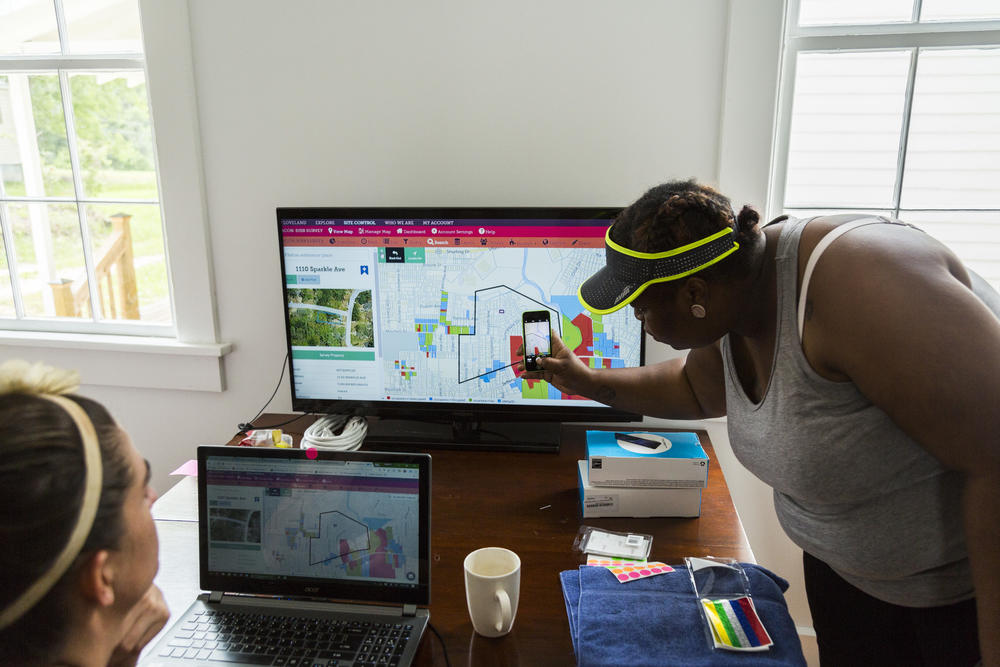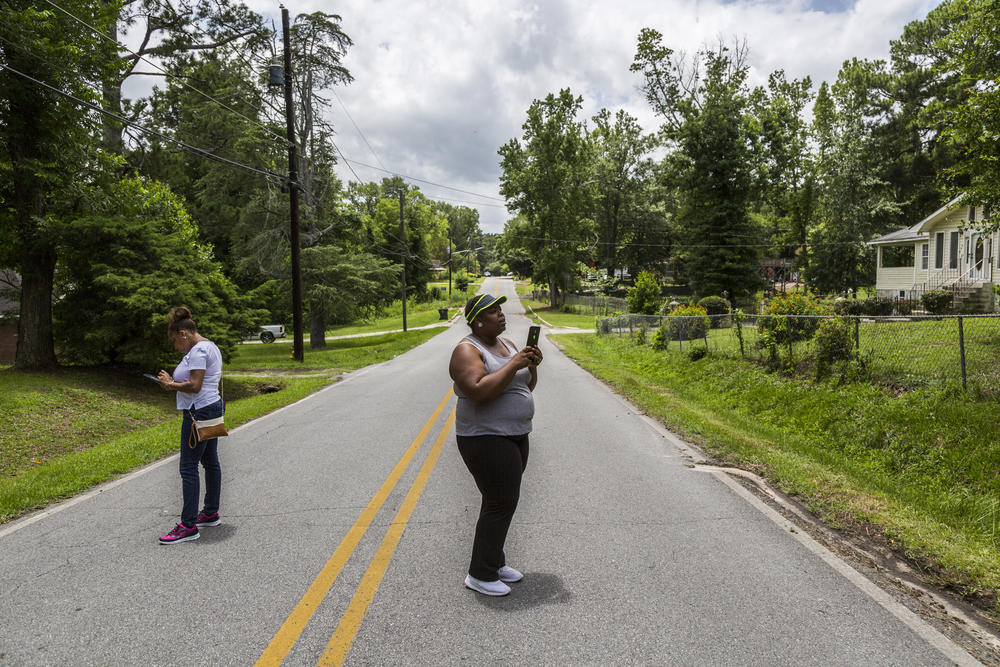Section Branding
Header Content
Want To Fight Blight? Get A Map
Primary Content
Want To Fight Blight? Get A Map
Allison Goldey says there’s one big question that makes her job hard.
“How do we even think about solving this problem without knowing what we have?” she asks.
As the head of the Macon-Bibb County Land Bank, Goldey is on the front lines of the $15 million blight remediation effort in the city. The Land Bank buys blighted houses, which the county then demolishes. The thing is, Macon-Bibb County can’t really say where its blighted housing is.
Without knowing that, it can be tough for Goldey to make the best choice about which houses to buy.
That’s why Macon-Bibb Commission has asked Detroit-based Loveland Technologies to map about half of the city, 33,000 parcels. In Detroit, Loveland mapped the entire city. That helped a public/private partnership find and demolish 11,000 of more than 73,000 blighted homes on that map called Motor City Mapping. The hope is that by mapping Macon, Goldey and others can get strategic in their efforts to downsize the city.
Headquarters for the Loveland project is in a renovated textile mill village home on the east side of town. On a recent afternoon, there was a pile of computer tablets charging in the kitchen and in the living room a large computer monitor that showed the map in progress. Surveyors huddled around the monitor to figure out where they would go next. Among them was Loveland’s Isaac Robb.
Robb calls this a property inventory and says cities have done them for years, but the Loveland technique goes further.
“Cities and counties have collected data....tax delinquencies, parcel size, lot information...for a long time,” he said.
What Robb says they haven’t done is give you a clear picture of what a place is used for. Or even what it looks like. That’s where the surveyors, armed with computer tablets and the Loveland app come in.
The work goes like this: Head out to a spot in the city, look at what’s in front of you and fill in some questions on the app which comes preloaded with all that old-school data. Repeat the process thousands of times.
“So the first question we ask is, ‘Is there a structure on the site?’” Robb said. “And we define structure as something permanent.”
A house? Yes. Storage shed? No.
“Then we go through basic occupancy. If it's occupied, if it's unoccupied, possibly occupied or partially occupied.” Robb continued.
Squatters count as occupants. Other questions include ‘How does the roof look?’ and ‘Is the structure painted?’
“Are possums going in?” Robb added. “Or raccoons, and doing all their fun and games inside?”
Then surveyors snap a curbside photo for the app. Taken together, you get a city-sized look at the spectrum of livable housing. Anything unlivable, also known as blighted, shows up as bright red on the map.
After lunch a survey team headed out to a street of modest but well-kept houses in East Macon. A man had just killed a rat snake in his mother’s front yard when we they pulled up. He asked surveyor Karissa Coleman what was going on.
“What we're doing is surveying vacant lots or abandoned houses,” she explained. Coleman and all the surveyors are locals hired to do the job, mostly because so they can quickly have these sorts of conversations.
“If you see a lot of people, it's a team of us,” she concludes. The man seemed satisfied with the explanation.
Allison Goldey of the Macon-Bibb Land Bank looks forward to seeing a complete map with neighborhood level patterns of blight in bright red. She also expects to see another pattern, what she calls “tipping point” neighborhoods.
“Where if we can intervene up front and take some measures up front, we can stop a neighborhood from becoming blighted,” she said.
That would be brand new. Goldey said she will need another employee to keep up with demand. That will take more money. So will demolishing the structures. That’s the job of Cass Hatcher, Macon-Bibb County’s blight consultant, known around government offices as the “Blight Czar.” He said asking for more money from the County Commission will be easy when they see all the red on the map.
“They can see a map and see their district and they can see all this blood,” he said. “You can see how bloody the map is and they know they got a problem.”
Loveland Technologies expects the Macon blight map to be done in September.



